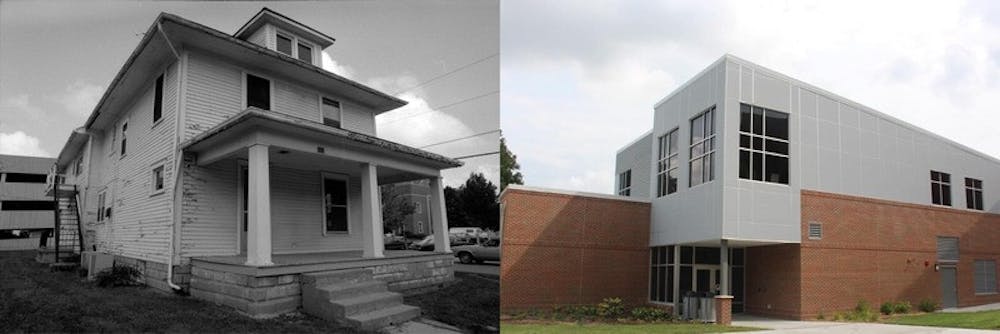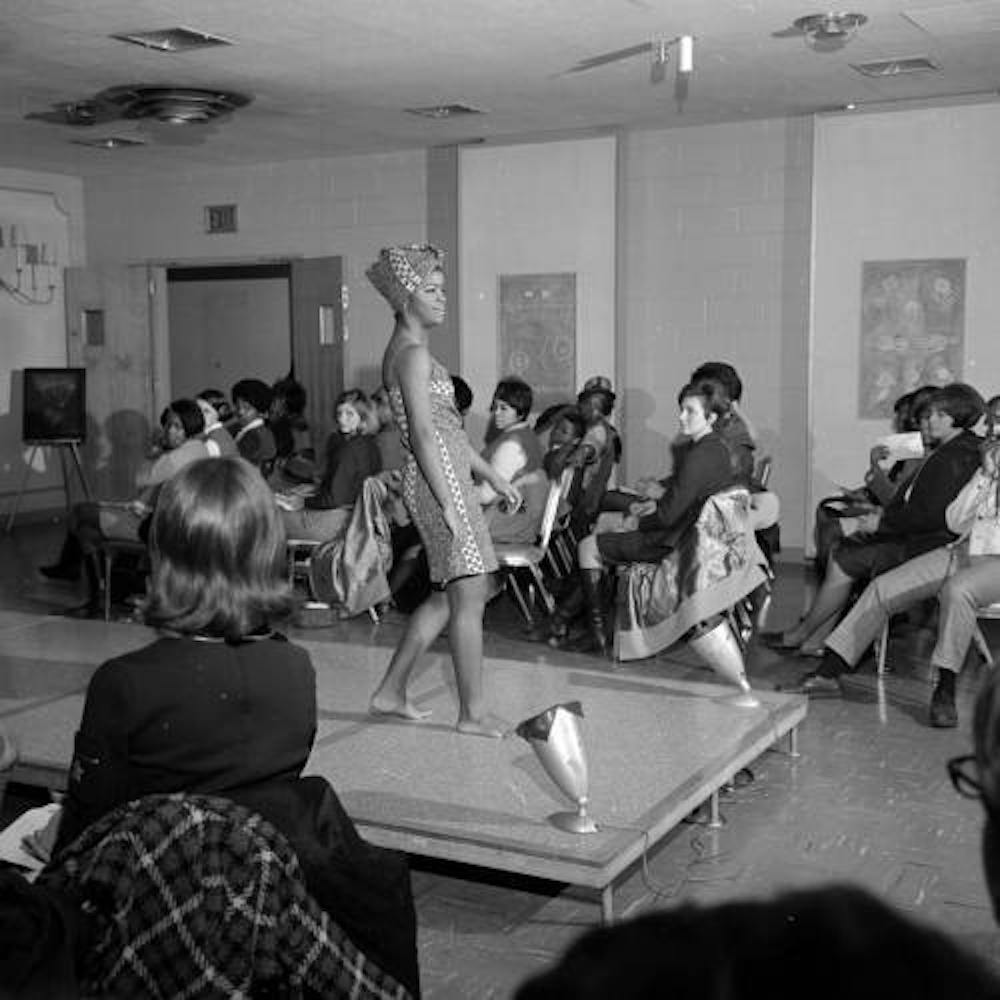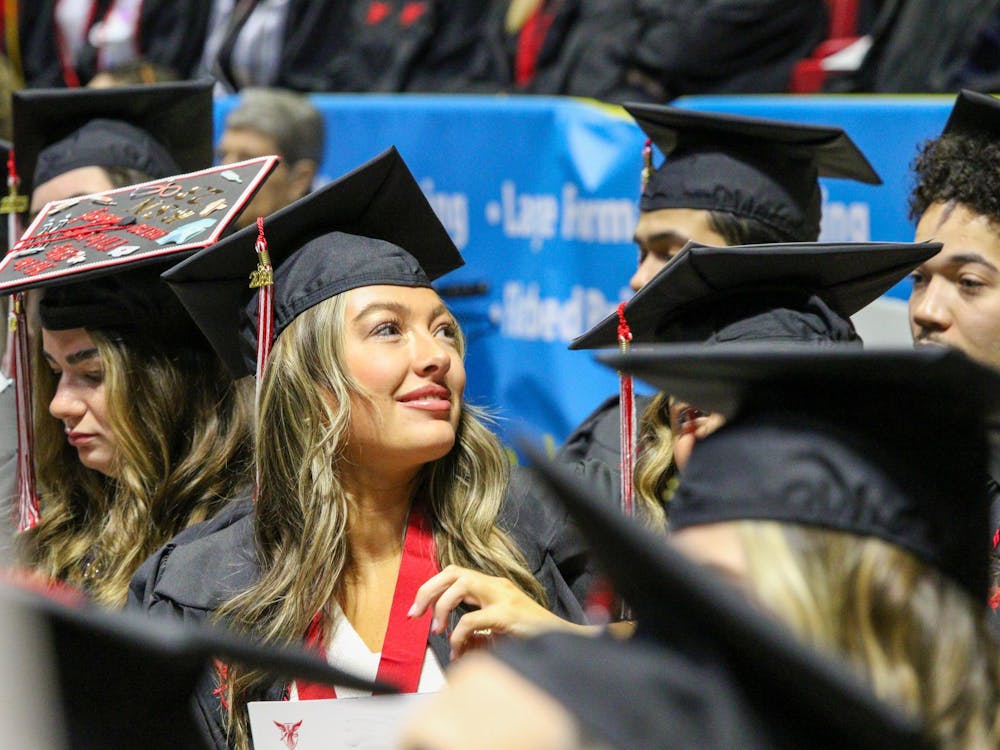Improving inclusivity in Multicultural Center events
The Miss Black Ball State Pageant started in 1969 because Black Student Union members thought, even though Black people were included in the Homecoming queen nominations, it seemed “a black doesn’t have a chance to win.” The winner received her own opportunity to ride in a Homecoming parade car.
The Miss Black Ball State Pageant was held until 1993, when it became the more inclusive Miss Unity Week Scholarship Pageant.
Organizers dropped the “Miss” in 2007 and hold the Unity Scholarship Pageant each spring semester.
Source: Ball State Daily News archives
While Ball State hosted 50th anniversary celebrations in 1968, minority students were working to propose discussions about discrimination among fraternities and sororities, as well as other social groups.
Then-junior Ron Payne proposed a student government bill in January 1968 to address discrimination on campus, but the bill “failed to pass by a considerable margin,” according to The Ball State Daily News. Two weeks later, about 50 minority students walked out of Emens Auditorium as then-Ball State President John Emens’ addressed the campus community.
The walkout is among the events highlighted in the digital exhibit “The Ball State University Multicultural Center: Ambassadors of Campus Inclusion and Diversity.” The exhibit explores Ball State’s history of diversity and inclusion, which Dean of University Libraries Matthew Shaw said helps to magnify diverse voices throughout Ball State’s history.
“The digital archive exhibit is another opportunity for the libraries to participate in the important and ongoing work of amplifying the diversity of voices in our collections, including the rich documentation of the university archives,” Shaw said.
University Libraries’ archive specialist staff Becky Marangelli and Mindy Shull spent about 10 months creating the digital archive, which debuted in January 2022. The exhibit includes oral history interviews from the Digital Media Repository, as well as newspaper photos and a timeline to give visitors an understanding of the Multicultural Center’s evolution on campus and the development of programming specifically for people of color.
Origins
In 1968, Ball State hired George Davis, then an assistant professor of geography, to serve as the university’s first director of special programs. According to Board of Trustees archives, Davis served in the role for 10 months before accepting a position at the University of Michigan’s newly formed Commission on Geography and Afro-America. Marangelli saidthat even in Davis’ brief time as director, he developed a range of programs and events for minority students.
“Establishing an entirely new department committed to the advancement of Black students and scholarship in the late 1960s did come with some frustrations,” Marangelli, said. “[Davis] continuously voiced concerns that more effort and more change was needed to recruit Black students to Ball State, and he continued to advocate for and support minority students after his resignation in 1969.”
Davis facilitated Ball State’s first Black History Week in 1969, which was later renamed Unity Week in 1978. Unity Week continues each spring semester on campus and aims to unify the campus community through education and information about different cultures.
Transformations
In late February, Marangelli and Shull held a public presentation to discuss the history of the Multicultural Center, as well as civil rights and local political campaigns in the late 1960s. Their presentation included a slideshow with interesting facts about Ball State’s history of inclusivity, including the beginning of the Special Programs House.
Robert Foster, a photographer before he came to Ball State, took the helm as director of special programs in 1969, and he proposed a dedicated space for this work. On North McKinley Avenue, a small house of 3,000 square feet included a kitchen, living room, basement and office space. Built in the 1930s, this became the Special Programs House under Foster’s leadership in 1970, used for counseling services, study rooms and the Black Student Association.
Marangelli referenced a 1971 Ball State Daily News article that stated some students said the Special Programs House could be more welcoming of Black culture by incorporating a multicultural library or hosting more social events. Responding to this feedback, staff members added the Malcolm X Memorial Library and a rap room for students to engage in creative activities.
Expansion
The early days of the Office of Special Programs were largely defined by creating new experimental programs for minority inclusion.
The focus of the Special Programs House shifted in the 1980s, as Ball State welcomed an increasingly diverse student body. The Office of Special Programs changed to the Office of Minority Student Development in 1983. The Special Programs House became the Multicultural Center in 2000.
“After initial successes, [the Office of] Special Programs needed to transition to meet the needs of the ever-changing student body,” Shull said. “The office began to focus less and less on developing new experimental programs by the 1980s because so much of their time was spent on recruiting, advocating for and supporting minority students.”
Marangelli said learning about Ball State’s multicultural history helped her educate others about this important aspect of campus culture.
“Working on this digital exhibit was both a challenging and rewarding experience,” she said. “We are so grateful to have a more comprehensive view of this important piece of campus history.”
Bobby Steele, director of the Multicultural Center, said the University Libraries led the collaboration for the digital exhibit, but he offered details about how the Multicultural Center will expand and improve in the future.
“The exhibit provides access to information that may have been unknown otherwise,” Steele said. “History and context is critical in addressing issues related to equity and inclusion.”
Steele said the timeline of previous directors of the Multicultural Center, formerly the Office of Special Programs, resonated with him the most of all the exhibit features.
“I hope people can appreciate learning how the Multicultural Center was started and the advocacy from students and staff that made this resource possible,” he said.

The previous Multicultural Center (left) opened in 1970 to offer a gathering place for minority students and groups. When the Multicultural Center moved from its previous location behind the L. A. Pittenger Student Center to the new building east of Bracken Library last year (right), Multicultural Center staff gathered artifacts to send to library archives. Ball State Archives and Special Collections, Photo Courtesy
Advancement
Last year, the Multicultural Center moved from its previous location behind the L.A. Pittenger Student Center into a new building in the heart of campus, east of Bracken Library. Steele said the move encouraged staff to collect photos and artifacts to add to the library’s extensive collection of archives. Steele and others helped clarify the names and timelines of certain events to ensure the digital exhibit’s accuracy.
Shaw said having a digital exhibit allows anyone, anywhere to access the history of the Multicultural Center and the people and events of Ball State’s past. University Libraries, Shaw said, partners with faculty to integrate this and other archival collections into classroom teaching.
“This exhibit will continue to be a valuable learning resource for faculty, students and members of the community,” Shaw said. “Archives present opportunities to grapple with difficult histories, and the Multicultural Center exhibit is ultimately a celebration of generations of the Ball State community who have persevered to do the hard and vital work of inclusivity — work that must continue.”
Steele said a goal he shares with other Multicultural Center staff members is to continue to remove barriers students from marginalized groups face when pursuing higher education. He said he is always open to hearing suggestions and feedback to implement more inclusive initiatives to make the Multicultural Center and the university more welcoming.
Contact Grace McCormick with comments at grmccormick@bsu.edu or on Twitter @graceMc564.





